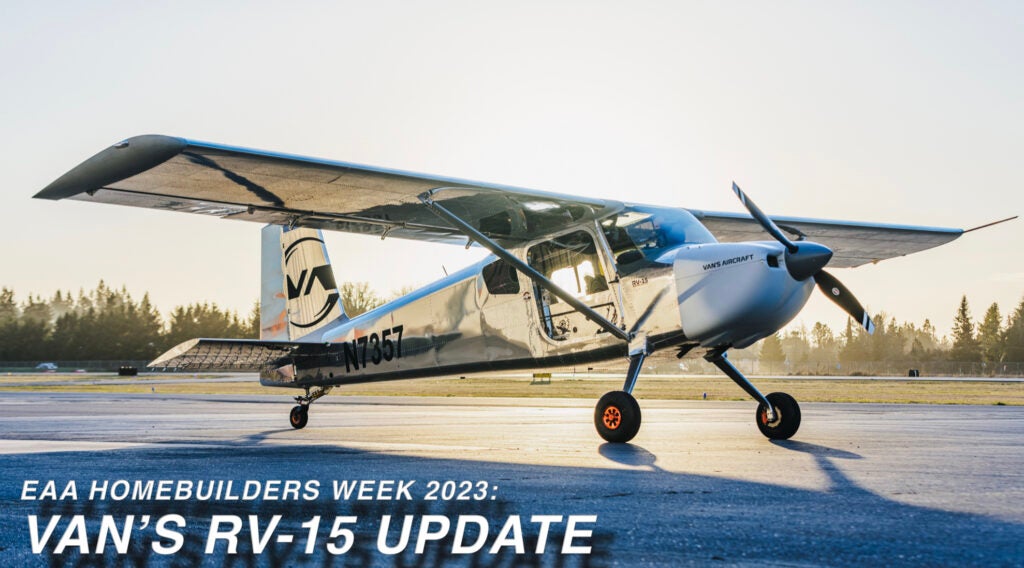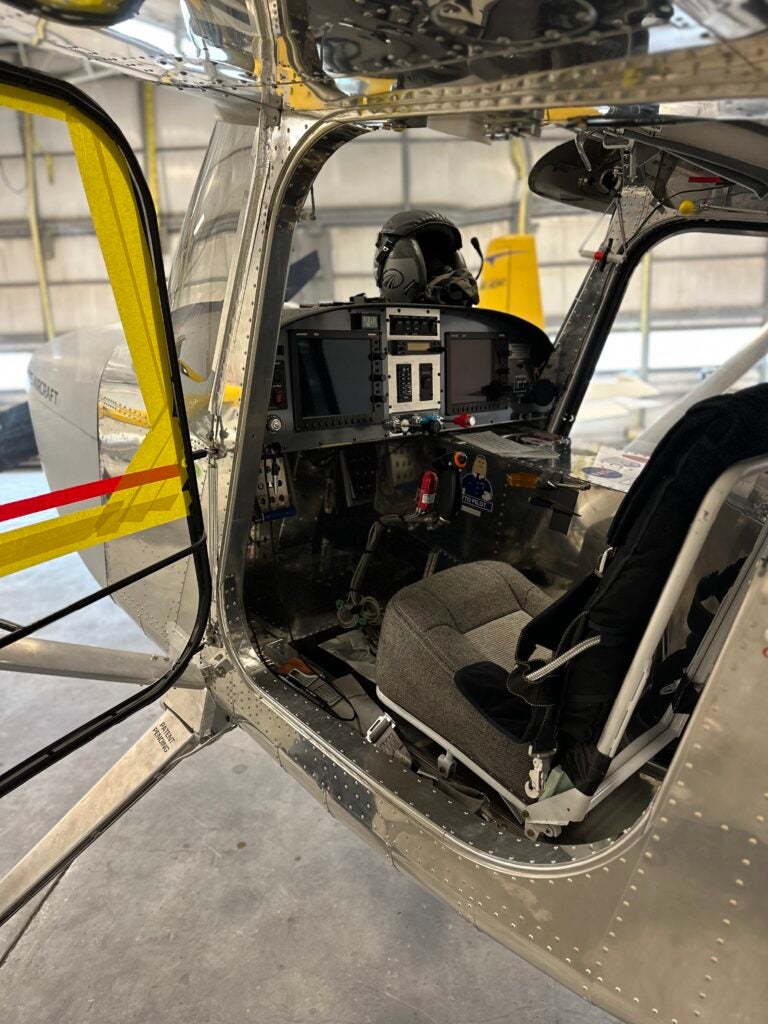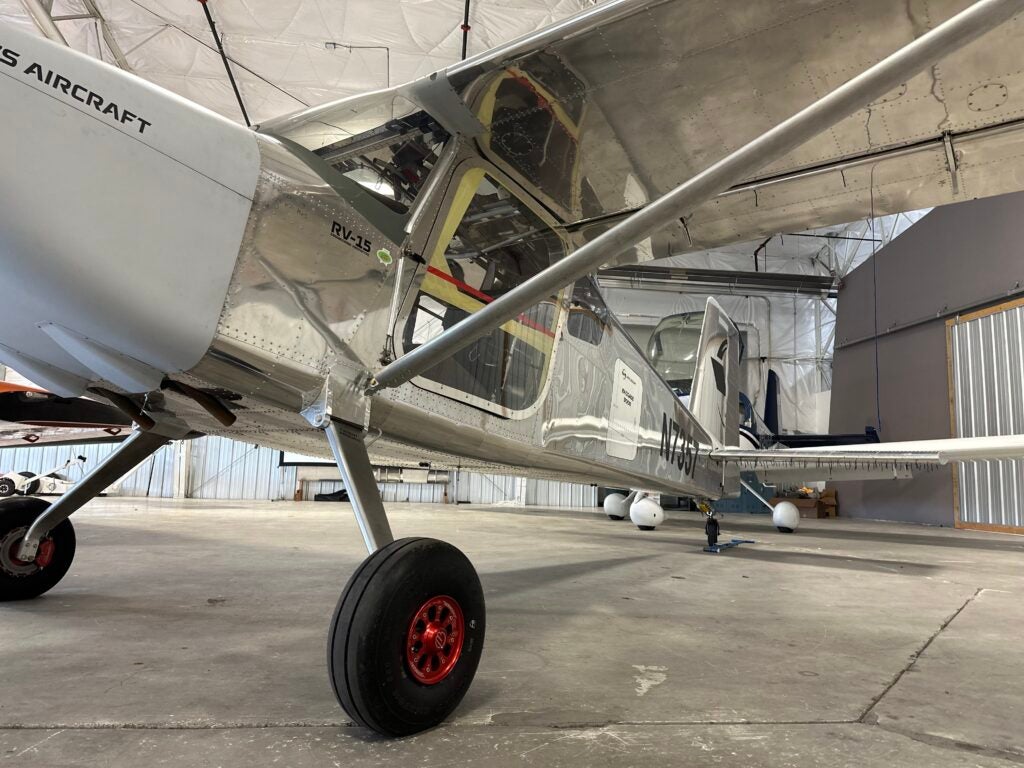 During the EAA’s Homebuilder’s Week series of seminars, Van’s Aircraft offered an update on the high-wing RV-15’s development, which has been fairly quiet since the airplane’s thunderous reveal at AirVenture last year. Van’s VP Greg Hughes outlined some significant changes to the airplane as the result of the extensive and detailed flight-test program. (The whole seminar is posted to the EAA’s Homebuilder’s Week site.)
During the EAA’s Homebuilder’s Week series of seminars, Van’s Aircraft offered an update on the high-wing RV-15’s development, which has been fairly quiet since the airplane’s thunderous reveal at AirVenture last year. Van’s VP Greg Hughes outlined some significant changes to the airplane as the result of the extensive and detailed flight-test program. (The whole seminar is posted to the EAA’s Homebuilder’s Week site.)
Perhaps surprising is that the company will end up building an all new airplane, which is the result of several desired changes. First of all, the wing will change (more on that in a moment) but it will also move aft slightly. At the same time, the engine will be moved forward and the fuselage “relofted” so that it’s wider at the A pillar. (The instrument panel will also move up to provide more knee room.) Changes to the fuselage will result from the wing move, including a more sloped windscreen. Overall, the fuselage will be longer and the main-gear points will move to preserve balance. It’s unclear how much of a “stretch” the RV-15 will get, but these changes will help make the airplane longer.
 About the wing. As we’ve mentioned before, the first-article’s wing was configured to be quick to build and had a control system that Van’s knew would not make it to production, in part because it precluded carrying fuel in the wings. (The airplane now flying has fuel where the passenger would go.)
About the wing. As we’ve mentioned before, the first-article’s wing was configured to be quick to build and had a control system that Van’s knew would not make it to production, in part because it precluded carrying fuel in the wings. (The airplane now flying has fuel where the passenger would go.)
The new wing, being built now, will have room for fuel—now quoted as 60 gallons instead of the early estimate of 50—and uses a “redefined structure” said to provide a weight savings. Van’s says the wing area is not expected to change, but various tweaks to the control system have been made and will be implemented in the second-article’s wing for improved handling. The company says it won’t change the flap or aileron spans but is considering how much total flap displacement is needed. (In the video, you can see handwritten notes on the front spar carry through depicting different flap settings, with the 50° notch labeled as “oh crap.”) Moreover, the novel roof-mounted flap handle in the first RV-15 will move to the floor. Somewhere, Clyde Cessna is chuckling.
Many of these changes suggest that the pre-prototype RV-15 was tail heavy and that the new configuration will afford more flexibility in loading. Van’s stated goal is a 200-pound baggage capacity along with a 900-pound useful load. No doubt Van’s is keeping an eye on building an airplane that works well with both the prototype’s IO-390 but with a lighter, less expensive parallel-valve O/IO-360. An airplane already a bit tail-heavy with the 390 will only be more so with the lighter engine up front.
Van’s also says that handling qualities continue to be a big focus of the RV-15’s development. The feedback-improving T-tabs seen on the trailing edge of the stabilator have been removed, while the trim and anti-servo configuration has also changed. Before, one tab was for trim while the other was the anti-servo tab. Now both tabs provide both functions, which should provide increased anti-servo effect without making the tabs bigger. (Stabilator design is often as much art as science, especially when you’re picky about control feel.) Van’s seems sure that it will continue with the stabilator configuration. There are changes to the landing gear looking for weight savings, though the overall concept has proven itself during the flight testing.
Van’s is not focusing on top speed with the RV-15, but says that the low-speed realm has shown promising results so far, with low approach speeds and short landing and takeoff distances. (No word on how light the airplane is being flown.) Hughes said that the company is still on track to begin releasing kits 12-18 months after the airplane’s introduction last summer. Van’s will begin taking orders when “we have a confident delivery schedule,” with the wing kit expected to be first, followed by the tail kit, fuselage kit, finish kit and firewall-forward kit. Prices have not been released.
















interested in the buyer guide and prices on all components does comes pre-drilled or do I have to drill all the holes
Van’s is aiming for all final-size holes. There may be a few that need drilling or upsizing but those would be the exception. Of course, the kits aren’t fully identified yet but that’s the plan we’re aware of.